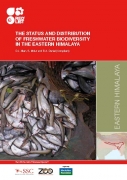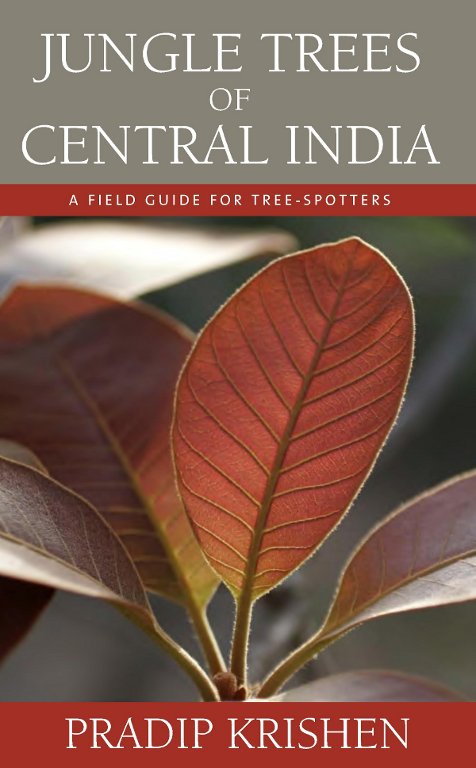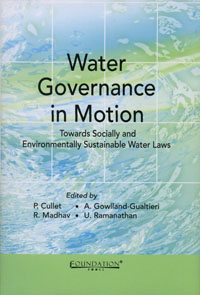Books and Book Reviews
Remote sensing applications: A book by NRSC (2010)
Posted on 01 Feb, 2011 05:52 PM
The book covers 16 chapters addressing various applications starting with introduction, state of art technology, case studies, literature review, future trends besides providing relevant references which are more useful for operational scientists and researchers. The resource scientists from Remote sensing & GIS applications area have contributed these chapters.
Questions on the ‘Value’ of a river for Indians - A review of the book "Economics of River Flows" by Dr. Bharat Jhunjhunwala
Posted on 01 Feb, 2011 05:38 PMIn his last book, 'Economics of hydropower' Dr. jhunjhunwala comes to a conclusion that we have neglected some very important costs of hydropower, while overestimating its benefit.
Urban water pricing: Setting the stage for reforms – A study by National Institute of Public Finance Policy
Posted on 31 Jan, 2011 08:22 PMIt underlines, in this regard, the importance of a responsible municipal fiscal and financial system, simplification of existing water pricing and tariff structures, and regulatory mechanisms which are able to balance the interests of the producers and consumers of urban services.
We are not doing a true cost-benefit analysis of hydropower dams in India - Interview with Dr. Bharat Jhunjhunwala
Posted on 28 Jan, 2011 05:46 PM Dr. Bharat Jhunjhunwala, past faculty at IIM, Bangalore, holds a doctorate in Economics. He has been working persistently on economic impacts of hydropower dams, applying the concepts of environmental economics to arrive at some interesting results.
Dr. Bharat Jhunjhunwala, past faculty at IIM, Bangalore, holds a doctorate in Economics. He has been working persistently on economic impacts of hydropower dams, applying the concepts of environmental economics to arrive at some interesting results.
His latest book, ‘Economics of River Flows: Lessons from Dam Removals from America’ analyses dam decommissioning examples from the United States and raises some pertinent questions about costs benefit analysis of dams in India. His earlier book, ‘Economics of Hydropower’ raised questions about economic efficiency, viability and sustainability of Hydropower Dams in India.
Parineeta Dandekar, IWP, talks with him on some of these issues.
Dr. Bharat Jhunjhunwala can be contacted at: bharatjj@gmail.com
The status and distribution of freshwater biodiversity in the eastern Himalaya – A report by IUCN
Posted on 28 Jan, 2011 07:08 AM One of the main reasons cited for inadequate representation of biodiversity is a lack of readily available information on the status and distribution of inland water taxa.
One of the main reasons cited for inadequate representation of biodiversity is a lack of readily available information on the status and distribution of inland water taxa.
In response to this need for information, the IUCN Species Programme, in collaboration with Zoo Outreach Organisation (ZOO) conducted the Eastern Himalaya Freshwater Biodiversity Assessment, a review of the global conservation status of 1,073 freshwater species belonging to three taxonomic groups – fishes (520 taxa), molluscs (186 taxa), and odonata (dragonflies and damselflies) (367 taxa).
Other groups that include freshwater species that have been comprehensively assessed are freshwater crabs (assessed in 2008, and 57 species of crab are present within the assessment region), mammals, birds, and amphibians and their assessments can be accessed on the IUCN Red List.
Booklets on water quality, river pollution and rainwater harvesting by Janhit Foundation
Posted on 18 Jan, 2011 04:16 PMThe three booklets discuss the issues of water quality, river pollution, and rainwater harvesting, in detail.
"Jungle Trees of Central India" - A preview of the field guide for tree-spotters by Pradip Krishen
Posted on 23 Dec, 2010 01:26 AM
Content Courtesy: Flowers of India
Jungle Trees of Central India is a lovingly detailed field guide to every tree you're likely to see in the magnificent dry, deciduous forests of the region. Bigger than France and encompassing 5 of India's most visited Tiger Reserves, Central India is home to the classical types of wilderness that one associates with the term 'Indian Jungle'.
People's initiative in water - Olavanna village in Kerala (India) - Reclaiming public lives - Transnational Institute
Posted on 10 Dec, 2010 06:12 PMThis chapter from the book 'Reclaiming Public Lives' by Transnational Institute describes the case of a small village in the state of Kerala, India, which faced an acute drinking water crisis and describes how people’s initiative, together with the involvement of the local panchayat and the support of the state government, could successfully address the issue of scarce drinking water in the village.
Degraded and wastelands of India - Status and spatial distribution
Posted on 07 Dec, 2010 10:16 PMThis book by NAAS and ICAR builds-on and integrates work done by different institutes of the ICAR and the Department of Space in the area of degraded and wastelands in India. NRSA had already published the state level and country level information earlier. In addition, the nature and causes of the land degradation, and the degree and extent of damaged lands needed to be determined, so that appropriate management strategies could be designed and implemented in a defined time-frame to bring these lands to ‘productive health’.
Water governance in motion: Towards socially and environmentally sustainable water laws
Posted on 18 Nov, 2010 10:48 AM

Water Governance in Motion: Towards Socially and Environmentally Sustainable Water Laws focuses on the work undertaken by International Environmental Law Research Centre IELRC on water law reforms in India. It seeks to provide a broader understanding of the conceptual framework informing existing water law and ongoing reforms.